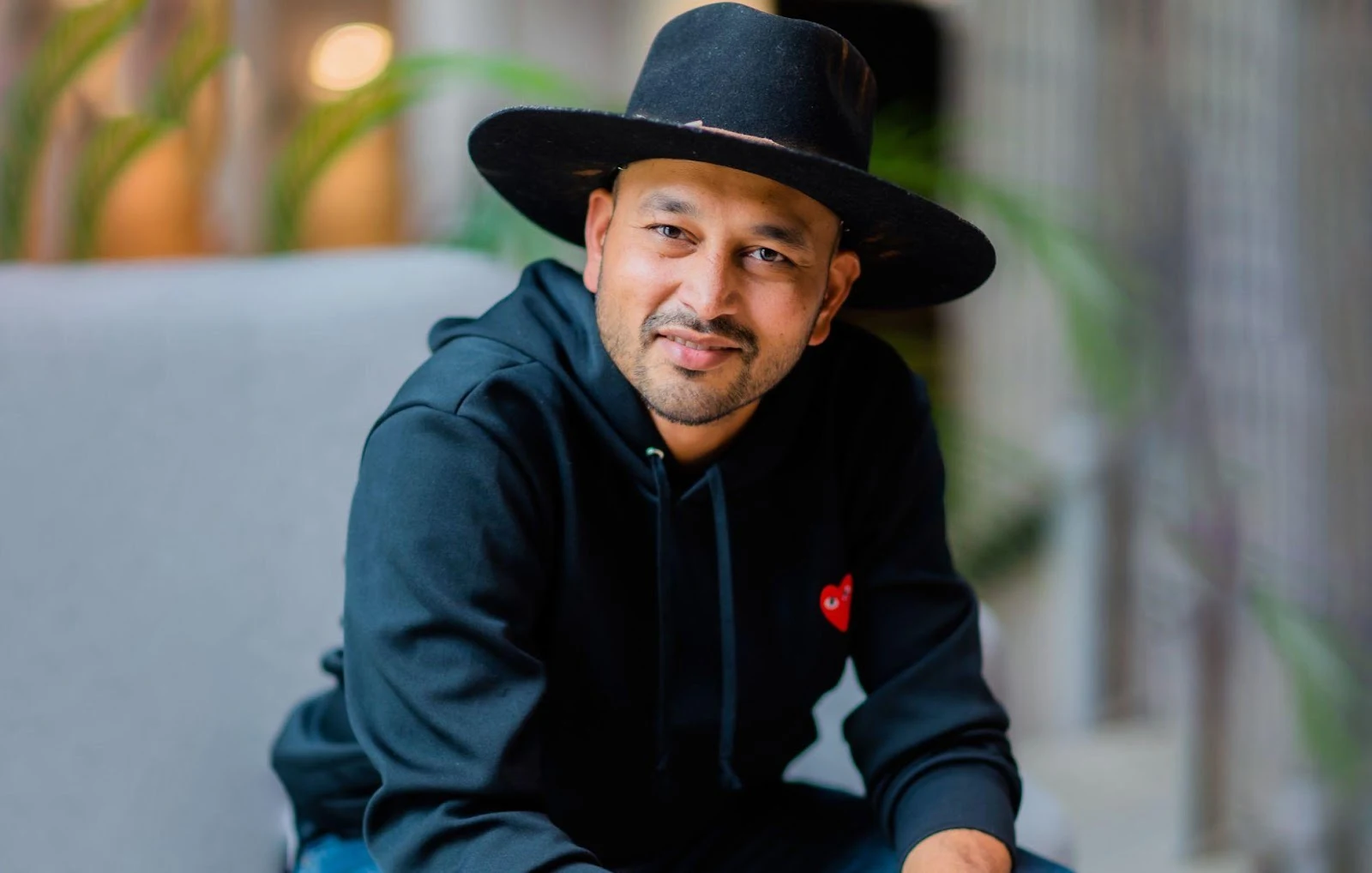In a world that moves faster than ever, it’s easy to lose sight of who we are and where we’re going. Many of us find ourselves stuck in a loop of overthinking, second-guessing, or simply feeling off-track. Enter Ajit Nawalkha — a globally respected leadership coach, former CEO of Mindvalley, and co-founder of Mindvalley Coach and Evercoach,— who has guided thousands toward rediscovering purpose, confidence, and direction. With a rare ability to blend deep insight with practical tools, Ajit helps people peel back the layers of noise and return to what truly matters. In this inspiring conversation, he shares how you can move from confusion to clarity — and begin living a life aligned with your authentic self.

What are some common reasons people lose their sense of direction in life, even when things seem to be going well on the surface?
We often confuse momentum with meaning.
On the surface, life can look polished, with career milestones, travel, and even be a spiritual practice, but underneath, many people are living in reaction, not intention.
We follow paths laid out by others: our parents, our culture, and Instagram.
And at some point, we wake up successful… and unfulfilled. That loss of direction usually happens when you’ve been achieving without aligning. You’re ticking boxes, not answering deeper questions.
This is the exact kind of misalignment we’ll explore during the Limitless Immersion experience in Dubai this May. It is a space designed for high performers to pause, reflect, and realign their inner truth with their external success.

How can someone begin to identify whether their confusion is temporary or a sign of deeper misalignment?
Confusion is a signal.
Temporary confusion feels like a fog; it’s unclear, but with movement, you know you will find a way.
But deep misalignment feels like a weight you can’t see a path forward.
The litmus test I give clients is this: Does the confusion lift after rest, reflection, or connection with your purpose? Or does it return, even stronger?
If it returns, you’re likely not confused. You’re misaligned with the life you’re pretending to enjoy.
At our events, we walk participants through a process to uncover exactly these signals, and how to differentiate surface-level fatigue from core-level misalignment.

What’s the first small step someone can take when they feel completely lost or overwhelmed by life decisions?
Being overwhelmed usually isn’t caused by too many problems or ideas.
It’s caused by too many thoughts about too many issues and ideas, all at once.
When everything collapses into your mind simultaneously, it feels like you have no clear path forward. The way out of that spiral isn’t to think harder, it’s to externalize and prioritize.

Here is a tool to deal with overwhelm. Take a sheet of paper and write down every decision, option, or input that’s weighing on you. Get it all out of your head. Then, use a simple filter to make sense of it. The filter you use to prioritize ideas may be different, based on the area of life you are using it for.
For example, I teach a model called LERR—Leverage, Ease, Risk, Return for businesses. If you’re trying to choose between five business ideas, ask yourself:
Which one gives me the most leverage?
Which one feels easiest to start or move forward?
What’s the risk involved?
What’s the potential return?
It’s incredible how quickly clarity emerges when you get your thoughts on paper and give them structure.
Overwhelm doesn’t need more thinking. It requires more space and a system.

In your experience, how important is it to revisit core values and beliefs when trying to gain clarity?
It’s not just important, it’s foundational. Core values are your internal compass. When life feels foggy, you usually navigate without a map.
Now, you don’t need to revisit your values daily, but they need to be visible, especially when you’re making decisions, setting goals, or choosing your next path.
Personally, I live by four values: Love, Service, Freedom, and Health.
Everything I am must come from love.
Everything I do must serve humanity.
I don’t compromise my freedom.
And I don’t sacrifice my health or my family’s.
Because those values are crystal clear, my decisions become clear too. And just as importantly, it becomes easier to say no.
No to opportunities that don’t align.
No to people or paths that cost me more than they return.
Clarity isn’t just knowing what to say yes to, it’s knowing what to walk away from. Your values tell you both.

How do you guide clients to differentiate between external expectations and their true inner calling?
One simple tool:
Ask, “If no one ever saw this, would I still choose it?”
Most of us are chasing a life that photographs well. But your calling doesn’t need an audience, it requires your alignment.
When something is truly yours, it feels peaceful before it looks impressive. That’s how you know it’s coming from within.
We’ll be doing powerful work around this exact question in the Limitless Immersion experience, helping people unravel their deepest motivations—unfiltered by performance, applause, or expectation.
Can fear of making the wrong choice keep people stuck in confusion, and how can they move past that fear?
Absolutely. Many people aren’t waiting for clarity—they’re waiting for guarantees.
And clarity doesn’t come with guarantees. It comes with movement. The fastest way to dissolve fear is action.
Small, imperfect, honest steps toward what you believe might be right.
The fear doesn’t vanish overnight, but it loses its grip when it sees you walking anyway.
What are a few practical tools or daily practices you recommend for building clarity and direction over time?
Clarity isn’t a one-time breakthrough; it’s something you cultivate. Like any good practice, it comes from simple tools used consistently.
1. Prioritize what’s important over what’s urgent.
Most of us live in reaction mode, responding to what the world wants from us, not what matters most to us.
The first step to lasting clarity is learning to ask: What’s truly important today?
Not what’s loudest. Not what’s fastest. What’s most aligned with the life I want to build?
I recommend doing this daily if possible, or at the very least, once a week. Even five minutes of intentional focus on your true priorities can reset your whole day.
2. Write your “Perfect Day.”
This tool is simple, but powerful: sit down, calm your nervous system, and imagine your life not in hustle mode, not from anxiety, but from love.
What would your perfect day look like if you lived in full alignment?
Write it out in detail. From the moment you wake up to the moment you wind down, describe the people, the energy, the work, and the space. This isn’t about chasing someone else’s dream or checking off society’s boxes. This is about designing a day inspired by your soul.
When you can see your perfect day clearly, you’re no longer chasing random goals. You’re moving toward a life that’s deeply, authentically yours.

3. Identify the version of you who lives that life.
Once you’ve written your perfect day, the next question is: Who do I need to become to live that life consistently?
Clarity isn’t just about the vision, it’s about aligning your identity with it. That means getting honest about the gap between who you are today and who you’ll need to be to live that vision fully.
Often, that gap includes developing personal skills like confidence, focus, or resilience, and practical skills like communication, leadership, or creativity.
The more you grow into that next version of yourself, the more natural and sustainable your dream life becomes. You’re not just visualizing clarity—you’re becoming the person who lives it daily.
Once someone finds a sense of purpose or clarity, how can they protect it from distractions and self-doubt?
Finding clarity is a breakthrough. Keeping it—that’s the real practice. Because once you know what matters, life doesn’t suddenly get quieter. The distractions don’t disappear. The self-doubt doesn’t go on vacation. If anything, they get louder.

So you need tools that ground you daily, weekly, and when it gets messy.
First, let’s talk about distractions. One tool I teach is the 3-Zone Focus Map. It’s simple: every task you do falls into one of three zones—what moves the needle, what keeps you busy, and what pulls you away.
Every morning, ask yourself: What’s one thing I can do today that moves the needle?
If you do that one thing before you check your phone, before you answer emails, you stay in alignment, even in a noisy world.
Now, for self-doubt. It never fully goes away. So I teach a tool called the Evidence Loop.
Don’t argue with it when that voice shows up—“I’m not good enough” or “I’m not ready”. Challenge it with evidence.
Ask: What proof do I have that this is true? And what evidence do I have that it’s not?
Then take one small action toward the truth you want to believe.
Self-trust is built like anything else: with practice and repetition.
And finally, clarity needs structure.
Build rituals that reconnect you to your values.
Set boundaries that protect your energy.
And surround yourself with people who see your purpose and won’t let you forget it.
Purpose isn’t something you protect with willpower.
You protect it by designing your life around it, on purpose.
About Limitless | Life. Love. Legacy.
Founded by Ajit Nawalkha, a renowned life and business coach in 2025, Limitless | Life. Love. Legacy. is a global transformation company dedicated to helping high performers evolve into conscious leaders. Through immersive workshops, personalized coaching, and neuroscience-based systems, the organization helps individuals rewire their mindset and create lasting impact—in business and in life.
Ajit Nawalkha has certified over 15,000+ coaches in his methodology in transforming lives. His impactful approach has generated over 3100+ testimonials, making him the most positively reviewed coach trainer in the world. He is also the author of “The Book of Coaching”, “The Business Book of Coaching” and “Live Big”. He is the co-founder of Mindvalley Coach serving 600,000 coaches globally.
For more information, visit:
https://limitlessimmersion.com
Instagram: @limitless_immersion/
